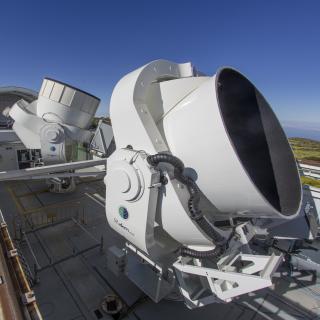General
Este proyecto mantiene dos líneas principales de investigación activas:
1) Estudio de la estructura, condiciones físicas y composición química de las nebulosas ionizadas, tanto galácticas como extragalácticas, a través del análisis detallado y modelización de sus espectros. El enfoque de estudiar en detalle nebulosas cercanas a través de espectros profundos puede ayudar a entender varios problemas que aún están vigentes en la física nebular, como: 1) intentar dar luz a viejos problemas de la física nebular como el problema de la discrepancia de abundancias; 2) investigar gradientes de composición química a lo largo del disco de nuestra galaxia y en galaxias cercanas y su evolución con el tiempo; 3) entender la física de las regiones de formación estelar a alto redshift que están comenzando a ser rutinariamente observadas con el telescopio espacial James Webb (JWST) tanto a través de estudios detallados de estas galaxias como del estudio de galaxias análogas en el universo local.
2) Determinar las condiciones físico-químicas de las nebulosas planetarias galácticas y extragalácticas del grupo local y de las nebulosas alrededor de estrellas simbióticas. El fin es entender el origen de la morfología de estos objetos y poner a prueba los modelos teóricos que intentan explicar la morfología y la cinemática nebular, con especial énfasis en los modelos con estrellas binarias centrales. Estudiaremos también las implicaciones de la evolución de los sistemas binarios en otros escenarios astrofísicos, como la formación de jets, las variables cataclísmicas y las explosiones de tipo nova y supernova.
Miembros
Resultados
- Se ha encontrado evidencia de la existencia de compuestos sólidos de azufre acumulados en el objeto HH 514, un chorro de gas eyectado en el corazón de la nebulosa de Orión, y que podría explicarse con la destrucción de reservorios de granos de polvo ricos en sulfuros, posiblemente ligados a la formación de exoplanetas. (Méndez-Delgado et al. 2022)
- Imágenes obtenidas del telescopio espacial James Webb de la nebulosa planetaria NGC 3132 han revelado estructuras morfológicas complejas en el gas que podrían ser debidas a la interacción de la estrella moribunda con dos o incluso tres compañeras muy cercanas e invisibles. (De Marco et al. 2022)
- Se ha encontrado evidencia de que variaciones de temperatura en el gas ionizado contribuyen a las discrepancias de abundancia en regiones HII. Bajo esta premisa, las metalicidades medidas en galaxias locales con formación estelar y en aquellas en el universo temprano podrían estar subestimadas en un factor entre 2 y 5. (Méndez-Delgado et al. 2023)
- Se ha encontrado una relación muy estrecha entre Fe/N vs. N/H en una muestra de 452 nebulosas (regiones H II y galaxias con formación estelar). Esta relación se interpreta como evidencia de que el Fe y el N se producen en escalas de tiempo muy similares. Esto vincula estudios químicos estelares y nebulares, con implicaciones para ambientes de baja metalicidad (Méndez-Delgado et al. 2024)
![Izquierda - Imagen RGB de la nebulosa de Orión y M43 obtenida filtros estrechos con la cámara WFC en el INT: H alfa (rojo), [S II] 6716+30 (verde), [O III] 5007 (azul). Derecha - Imagen en falso color de la nebulosa planetaria NGC 6778. En azul se ve la emisión en la línea de O II tomada con el filtro sintonizable azul del instrumento OSIRIS en el GTC; en verde imagen con el filtro estrecho de [O III] del Nordic Optical Telescope (NOT). Izquierda - Imagen RGB de la nebulosa de Orión y M43 obtenida filtros estrechos con la cámara WFC en el INT: H alfa (rojo), [S II] 6716+30 (verde), [O III] 5007 (azul). Derecha - Imagen en falso color de la nebulosa planetaria NGC 6778. En azul se ve la emisión en la línea de O II tomada con el filtro sintonizable azul del instrumento OSIRIS en el GTC; en verde imagen con el filtro estrecho de [O III] del Nordic Optical Telescope (NOT).](/sites/default/files/styles/crop_rectangle_21x9_to_1280/public/images/project/imagen_web.jpg?itok=_CZ-LRtm)



